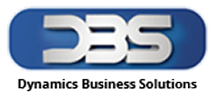Nearly one in five companies reports that a single payroll error cost them over $100,000 when downstream taxes, corrections, and audits are included.
This guide explains how a unified platform embedded in Microsoft dynamics 365 eliminates fragmented tools and creates a single source of information for payroll, HR, and finance teams.
Built for Dynamics 365 FO, Dynamo ties time, rates, and benefits directly to finance records so every pay calculation reflects approved inputs without rekeying.
The cloud-based deployment cuts IT overhead and speeds updates while native integration with Microsoft Dynamics improves chart-of-accounts mapping and automated posting.
Dynamo’s Dynamics 365 integration also adds 24/7 employee self-service for paystubs and tax forms, reducing errors from outdated details.
Key Takeaways
- Single source: Embed payroll and HR into dynamics 365 to remove fragmented systems.
- Tight integration: Architected for Dynamics 365 FO to sync time and finance automatically.
- Employee access: Self-service cuts downstream mistakes by letting staff update pay and tax info.
- Governance: Configurable rules and validations standardize results every cycle.
- Visibility: Embedded reporting and Power BI dashboards speed decision-making before close.
Why Dynamo Payroll Delivers 100% Accuracy Inside Microsoft Dynamics 365 Finance and Operations
Dynamo ensures every pay cycle runs on verified inputs and governed steps inside Microsoft dynamics 365. That single-source approach cuts duplicate entries and prevents mapping errors that often cause miscalculations.
Cloud-based automation that eliminates manual, error-prone tasks
Automated workflows replace repetitive tasks—time capture, approvals, and calculations—so each step executes the same way every cycle. Continuous validation rules and pre-payroll audits flag issues early, reducing last-minute fixes and ensuring compliance with current regulations.
Embedded HR and payroll processes aligned to Finance & Operations
Master records flow from Microsoft dynamics into pay runs, removing duplicate data entry. Standard process templates enforce company rules and shorten onboarding while keeping accounting entries synchronized for accurate cost tracking across operations.
Employee Self-Service reduces data entry errors
ESS portals let employees update personal, tax, and bank details in real time. That reduces HR tasks and improves accuracy. For more on cost impacts, see manual payroll costs.
- Faster close with fewer adjustments.
- Real-time insights and exception reports before posting.
- Audit-ready outputs that support compliance.
Deep Microsoft Integration: Dynamics 365 FO and Business Central Connectivity
A unified connectivity layer ties jobs, time capture, and ledgers so cost data stays accurate across systems. Dynamo’s native connectors link Microsoft dynamics modules—Finance, Supply Chain, and Business Central—so master records, dimensions, and posting rules flow without custom code.
Continuous synchronization keeps employee, project, job, and cost centre records aligned. That ensures pay posting matches financial statements and reduces manual reconciliations across business central and finance.
Native connectors and migration
Import structured files for time worked, leave taken, and employee information from a prior provider to speed go-live and preserve history. Prebuilt adapters reduce project risk and shorten implementation time.
- End-to-end orchestration: order entry → time capture → approval → billing → pay, traceable in one platform.
- Finance mappings: GL, subledgers, and project accounting mapped to reduce IT effort.
- Governed data flows: secure synchronization supports audits and analytics.
| Capability | Benefit | Scope |
| Native Business Central sync | Accurate postings and live burdened cost | Employees, jobs, projects |
| Structured import | Faster migration, preserved history | Time, leave, employee data |
| Prebuilt connectors | Lower risk, faster value | Finance & Supply Chain |
| Automated allocations | Precise cost accounting | Accruals, burden rates, projects |
Learn more about how integration drives results in Business Central integration and see why a unified solution shortens close cycles and reduces DSO.
Comprehensive Payroll and HR Features Built for Compliance and Control
A single, governed system bundles pay calculations, time capture, and compliance controls so teams run consistent cycles every period.
Configurable calculation engine
Advanced formula builders support company-specific tax rules and complex deductions. Administrators can model union, locality, and benefit rules without custom code.
Time, attendance and rostering
Timesheets, clock-in data, and rosters feed pay runs automatically. That reduces manual edits and ensures premiums, differentials, and leave are accurate.
Employee self-service
Staff can access paystubs, W-2s/W-4s, and request direct-deposit updates 24/7. Self-service cuts administrative tasks and improves data accuracy.
Compliance, tracking and alerts
Statutory rules, license and certification tracking, and renewal reminders keep teams audit ready and aligned with regulations.
Reporting and financial integration
Operational reports and Power BI dashboards surface overtime, accruals, and liabilities. GL postings and cost allocations sync to Microsoft dynamics 365 for faster close and reconciliation.
| Feature | Benefit | Scope |
| Formula builder | Precise, repeatable calculations | Local taxes, unions, deductions |
| Time & attendance | Accurate hours and premiums | Timesheets, rostering, leave |
| ESS | Reduced admin, better data | Paystubs, tax forms, deposits |
| Compliance tracking | Audit readiness | Licenses, certifications, alerts |
For practical examples of how Dynamo reduces manual work and improves control, see 7 ways Dynamo solves HR issues.
Business Outcomes: Faster Close, Real-Time Insights, and Scalable Operations
Unified back-office flows turn recruiting, time capture, billing, and pay into a single, auditable sequence that reduces manual handoffs and drives measurable efficiency.
Drive efficiency from recruiting to pay to cash
Standardized workflows minimize silos and speed onboarding for staff and contractors. Fewer touch points mean fewer errors and less rework.
Order-to-time-to-bill-to-pay-to-cash becomes a traceable sequence that lowers administrative overhead and improves sales-to-cash velocity.
Improve financial visibility and cash performance
A live view of fully burdened labor cost helps leaders protect margins and set accurate prices. That visibility shortens period close and reduces Days Sales Outstanding.
Embedded reporting and dashboards surface anomalies early so finance and operations can act before issues affect customers or close timing.
Enterprise-grade security, global scale, and resilience
The platform scales to new regions, supports more staff during peak cycles, and enforces consistent controls across subsidiaries. This reduces reliance on shadow systems and spreadsheets.
“Integrated workflows and native Business Central integration deliver faster reconciliation and clearer cost-to-serve signals.”
- Connect recruiting through cash application for lower exception rates.
- Use live burdened cost to inform pricing and resource allocation.
- Leverage built-in reporting and Business Central integration for cohesive decision-making.
Conclusion
Dynamo turns fragmented steps into a single, repeatable pay cycle that leaders can trust.
Unifying HR, payroll, and finance on the Microsoft dynamics 365 platform delivers fewer exceptions, consistent information, and on-time pay for every period. The cloud-based approach ensures continuous updates, resilience, and secure operations without disruptive upgrades.
Employee Self-Service gives staff 24/7 access to paystubs, W-2/W-4s, and direct-deposit changes, improving data quality and reducing administrative tasks. Deep integration with dynamics 365 FO and Business Central standardizes data flows, simplifies audits, and strengthens leadership insight.
Ready to see results? Request a tailored demo to watch how this payroll solution streamlines work, speeds time to value, and scales with your business. Start by assessing migration data from your current provider, align target processes and reports, and set success metrics for pay accuracy and close speed.
For practical steps to improve accuracy and accelerate outcomes, contact the provider to define scope, timelines, and measurable business impact.
Dynamics Business Solutions (DBS) is certified Microsoft Dynamics partner in UAE, we take pride in our ability to develop and deploy the right business solution that matches global client’s requirements. DBS has developed in-house state of the art solutions for HR and Payroll, Dynamo and DynaPay on top of Microsoft Dynamics 365 FO and Business Central respectively. These solutions are catering the all business needs of HR and Payroll departments. We provide best services and support to our clients.
To know more, speak to our expert at Dubai: +971 4 447 5525 Jeddah: +966 508162072 or inbox us your query at info@dynamics.ae OR visit www.dynamics.ae
FAQ
How does Dynamo ensure 100% payroll accuracy when integrated with Microsoft Dynamics 365 Finance and Operations?
Dynamo enforces automated calculations, company-specific tax rules, and a flexible formula builder that align payroll processing with finance ledgers. Native connectivity with Dynamics 365 Finance and Operations reduces manual transfers and reconciliation, cutting data entry errors and ensuring consistent employee, tax, and pay data across systems.
What automation features remove manual, error-prone tasks?
The solution uses cloud-based automation to process timesheets, apply shifts and allowances, and validate tax and benefit calculations before pay runs. Workflow controls, approval gates, and pre-payroll audits flag anomalies so teams correct issues early, minimizing adjustments after payroll is posted.
How does embedded HR functionality improve payroll reliability?
Embedded HR processes keep employee records, tax elections, and benefit enrolments synchronized with pay engines. Changes made in employee profiles update in real time, reducing mismatches between HR and finance and ensuring pay runs reflect current status for hires, terminations, and status changes.
Can employees update their information to reduce payroll errors?
Yes. Employee Self-Service portals let staff view paystubs, update personal and tax information, change direct deposit details, and submit time-off requests. Real-time updates feed directly into payroll calculations, lowering the risk of outdated data causing incorrect payments.
How does the solution integrate with Dynamics 365 Business Central and supply chain modules?
Integration is native and supports end-to-end “order-to-pay” scenarios by exchanging cost, project, and time data between Business Central, supply chain, and finance modules. That enables accurate costing, labor capitalization, and automated journal posting to the general ledger.
What migration paths exist for importing time and employee data from legacy providers?
The platform provides connectors and ETL tools to import timesheets, leave balances, and employee demographics from legacy systems. Data validation routines and mapping templates simplify cutover, and staged migrations allow parallel runs to verify accuracy before go-live.
How are timekeeping and rostering tied to pay cycles?
Time & attendance, timesheets, and rostering modules integrate directly with pay engines so recorded hours and shift premiums flow into payroll calculations automatically. Rules for overtime, premiums, and rounding apply consistently across schedules and pay periods.
What compliance capabilities are included to meet federal and state regulations?
The system supports statutory reporting, tax withholding rules, and year-end filings such as W-2 generation. License and certification tracking with alerting helps employers meet industry requirements, while audit trails and configurable controls support regulatory reviews.
What reporting and analytics options are available for finance and HR leaders?
Built-in payroll reports, configurable financial journals, and Power BI dashboards deliver real-time insights into labor costs, burdened payroll expenses, and variance analysis. Integration with the general ledger ensures payroll entries post accurately for month-end close.
How does the solution speed financial close and improve visibility?
Unified workflows and automated postings reduce reconciliation time and manual adjustments, accelerating period close. Live costing and burdened labor views improve decision-making, while reduced days sales outstanding (DSO) and clearer cash flows support tighter finance operations.
Is the platform secure and scalable for enterprise needs?
Yes. Enterprise-grade security, role-based access, and audit logs protect sensitive payroll and personnel data. A cloud infrastructure supports global deployments, multi-entity configurations, and scale to accommodate growth and seasonal headcount changes.
How does the payroll system interact with benefits and retirement plans?
Benefit elections and deductions are integrated into the payroll engine so contributions, employer matches, and pre/post-tax treatment apply automatically. Vendor interfaces support third-party benefits providers for automated remittance and reporting.
What support exists for multi-jurisdiction tax calculations and global payroll?
The platform accommodates multi-state and multi-country rules with configurable tax tables, localization packs, and regional compliance templates. Centralized administration helps manage global payroll policies while respecting local statutory requirements.
Can the solution export payroll journals to external financial systems?
Yes. Configurable journal formats and native connectors enable seamless export of payroll entries to Dynamics 365 Finance, Business Central, or other ERP systems, preserving account mappings and cost allocations for accurate ledger posting.




